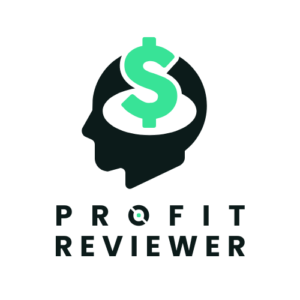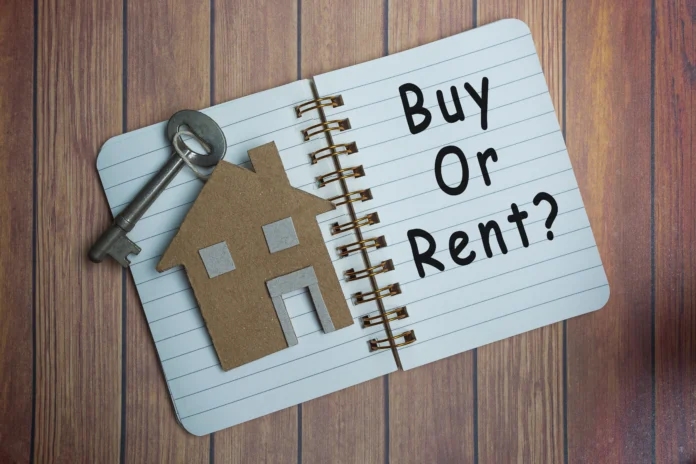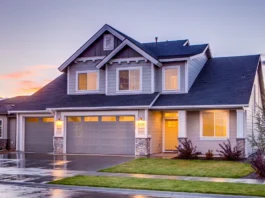The rent vs buy decision in Australia has become increasingly complex, with Perth house prices rising by 3% to a record high in the September 2023 quarter. Currently, Australia is experiencing a rental crisis, where demand exceeds available supply, resulting in low vacancy rates and significantly higher rental costs. While homeownership remains the traditional Australian dream, the financial reality can be sobering—purchasing and maintaining a $600,000 house over 30 years can cost approximately $1.53 million when accounting for deposit, buying costs, loan servicing, and ongoing maintenance.
When comparing renting vs buying Australia, prospective homeowners must carefully weigh the immediate flexibility against the long-term financial implications. The upfront costs alone for a $600,000 property include $120,000 for the deposit and $30,000 in buying costs, creating a substantial barrier to entry. Furthermore, the interest paid over a 30-year mortgage amounts to roughly $670,000 in “dead money”—a term similar to how some view rent payments. Despite these costs, property values tend to increase over time; however, the market can also experience periods of weak growth, during which homes may experience a decline in value. This guide examines whether Australians should rent vs buy, analysing the financial and lifestyle factors that influence this significant decision.
Why Buying a Home Appeals to Many Australians
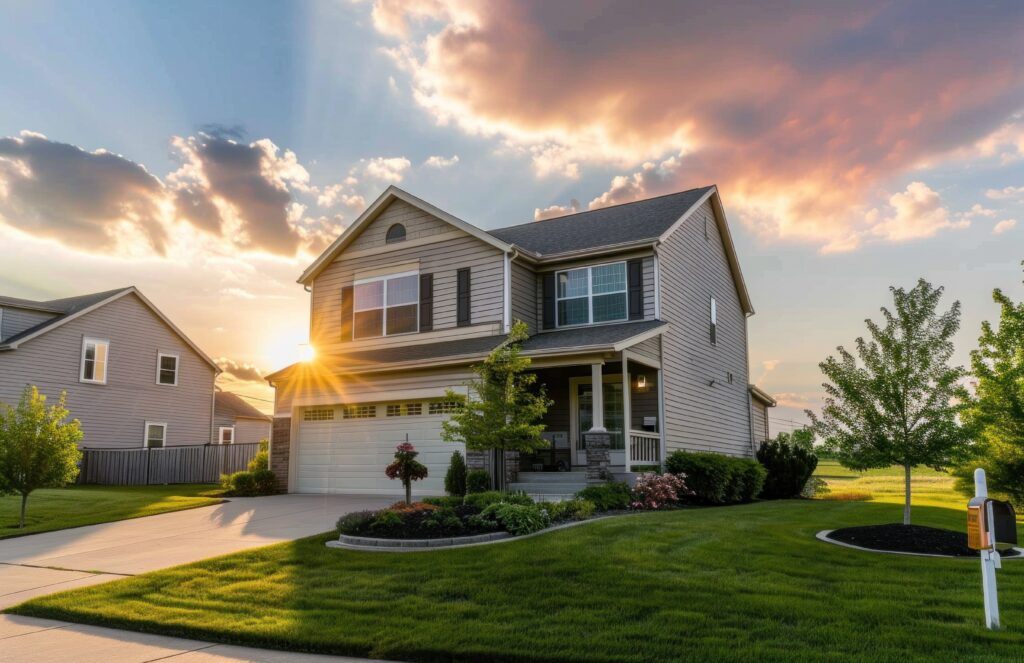
Homeownership represents more than just possessing a physical structure for many Australians. It embodies a fundamental aspect of financial security and personal identity within the Australian cultural landscape.
Security and Stability: No More Landlord Worries
The desire for stability drives many Australians toward homeownership. Unlike renters who face potential evictions and uncertain tenancy terms, homeowners enjoy the peace of mind that comes with secure accommodation. This security creates a foundation for families to establish roots in communities, allowing children to remain in one school and form lasting friendships. Mortgage payments typically offer greater predictability compared to rental costs, which landlords can increase at their discretion.
Moreover, homeownership provides non-financial benefits, including enhanced control, privacy, autonomy, and freedom from landlord surveillance. These qualities contribute to improved mental and physical health, better educational outcomes for children, and safer neighbourhoods. For many Australians, these psychological benefits represent compelling reasons to choose buying over renting.
Forced Savings: Building Equity Over Time
One of the most significant financial benefits of homeownership is the wealth-building mechanism it enables. Each mortgage payment incrementally increases the owner’s stake in their property, functioning as a forced savings plan. As homeowners pay down their loan balance, they simultaneously build equity—the difference between the property’s market value and the outstanding loan amount.
For example, if a property is valued at $611,596 with a remaining mortgage of $336,378, the homeowner has accumulated $275,218 in equity. This equity represents a tangible financial asset that grows over time, particularly in Australia’s historically strong property market.
The equity-building process offers several advantages:
- Provides financial security in retirement, reducing housing costs when income decreases
- Creates a potential source of funds through refinancing or equity loans
- Acts as a buffer against inflation because real estate values usually rise over time.
- Enables possible wealth transfer to the next generation
Furthermore, government programs like the First Home Owner Grant Scheme, the Home Guarantee Scheme, and the First Home Super Saver Scheme assist in lowering entry barriers, especially for first-time homebuyers.
Freedom to Renovate and Customise
Homeownership grants Australians complete freedom to transform their living spaces according to personal preferences without seeking landlord approval. This autonomy allows homeowners to create environments that genuinely reflect their identities and lifestyles.
The ability to renovate and modify a property offers both emotional and financial rewards. Emotionally, personalisation creates a stronger connection to the home, fostering pride and satisfaction. Financially, strategic renovations can increase the property’s value, thereby building additional equity.
In comparison to renters, many homeowners report feeling more in control of their lives, having a higher quality of life, and having more self-esteem.
Buying Property in Australia Hidden Costs
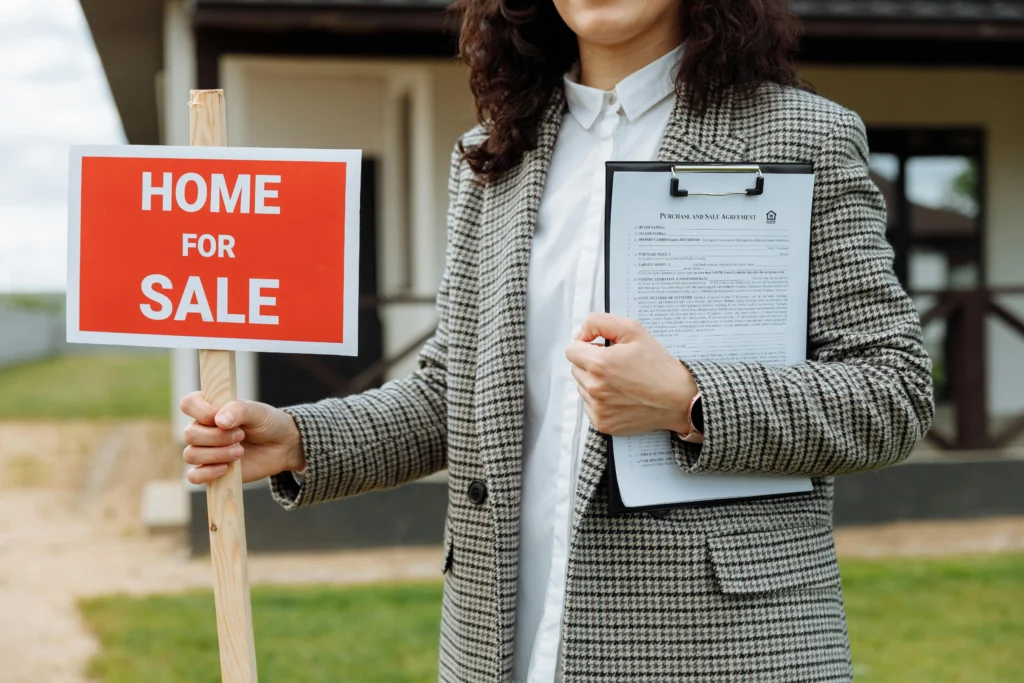
Prospective homeowners often focus on the property price and deposit while overlooking numerous additional expenses that significantly impact the overall cost of buying in Australia. These hidden costs can add as much as $61,159 to the purchase price, altering the financial equation in the rent vs buy calculation.
Upfront Costs: Deposit, Stamp Duty and Fees
Beyond the deposit—typically 20% of the property’s value—buyers face substantial upfront expenses. Stamp duty stands as the most significant additional cost, varying considerably between states. For a $764,495 property, stamp duty ranges from $27,073 in New South Wales to $33,591 in Victoria for non-first-home buyers. Many states offer exemptions or concessions to first-home buyers, with some paying no stamp duty on properties valued under specific thresholds.
Inspections of buildings and pests are essential for spotting possible structural problems or infestations. These typically cost around $917 but provide crucial protection against discovering expensive problems after purchase.
Legal requirements cannot be overlooked either. Conveyancing and legal fees average about $2,752 and cover contract preparation, title searches, and settlement procedures. Furthermore, mortgage registration fees and transfer fees vary by state, from $677 in New South Wales to $7,155 in South Australia.
Lenders Mortgage Insurance (LMI) applies when borrowing more than 80% of the property’s value. On a $764,495 property with only a 10% deposit, LMI could cost approximately $18,347, substantially increasing initial expenses.
Mortgage Interest: The Real Long-Term Cost
Interest represents the most substantial cost of homeownership over time. Banks calculate mortgage interest daily based on your outstanding loan balance, then charge it monthly as part of your repayment. Initially, a big portion of each payment is allocated toward interest rather than reducing the principal.
Interest rates vary depending on whether you’re making principal and interest repayments or interest-only payments. Interest-only payments may be lower initially, but they won’t reduce your loan balance without additional repayments. Moreover, lenders typically charge higher rates for interest-only periods compared to principal and interest arrangements.
Fixed-rate loans offer certainty but limit flexibility. Most lenders allow extra repayments up to a certain amount (typically around $45,869) before break costs apply. Variable rates permit unlimited extra repayments but lack predictability in payments.
Ongoing Expenses: Rates, Insurance and Maintenance
Homeownership entails recurring expenses that renters typically do not face directly. Council rates fund local services and infrastructure, typically ranging between $2,293 and $4,586 annually in metropolitan areas. Water rates constitute another regular expense, with fixed fees around $917 per year in some states.
Insurance costs have increased notably, with the average home and contents insurance reaching $5,349 annually—a 9% increase over the 12 months to November 2024. Building insurance is often mandatory for mortgage approval, protecting against damage to the physical structure.
Maintenance and repairs represent frequently underestimated expenses. A practical guideline is to budget approximately 1% of the property’s value annually for general upkeep and unexpected repairs. For apartment or unit owners, body corporate fees add another layer of costs, ranging from $611 to $1,528 per quarter for townhouses and $917 to $3,822 for apartments.
Ultimately, these hidden costs substantially influence the rent vs buy decision in Australia, sometimes tipping the financial balance toward renting, particularly in the short term. However, they must be weighed against the long-term benefits of ownership, including equity building and property appreciation.
Renting in Australia: Flexibility and Financial Freedom
Beyond the traditional path of homeownership, renting offers Australians distinct advantages in today’s dynamic housing market. With rising property prices and evolving work patterns, many find that renting aligns better with their financial goals and lifestyle needs.
Mobility: Move When You Want
Renting provides unparalleled freedom of movement, especially valuable in an era where career opportunities often require geographic flexibility. Once an initial lease expires and transitions to a month-to-month arrangement, renters can relocate quickly without having to navigate the complex process of selling a property. This mobility proves essential for those pursuing career advancement opportunities or lifestyle changes across Australia.
The financial implications of this flexibility are substantial. Selling a home to relocate costs thousands of dollars in agent fees and other expenses. Alternatively, homeownership often creates geographic immobility due to transactional costs that can exceed 6% of a property’s value. This rigidity may potentially limit career progression, particularly in cities like Sydney or Melbourne, where job clusters are dispersed.
Lower Entry Costs: Bond vs Deposit
Entry costs represent a stark difference between renting and buying. Renters typically need only a bond (equivalent to four weeks’ rent) and initial rent payments. In contrast, homebuyers must prepare approximately 20% of the property’s purchase price as a deposit, plus substantial additional costs.
Cash Flow Advantage: Invest the Difference
The financial freedom of renting extends to investment opportunities. With capital not locked into property ownership, renters can:
- Diversify investments across multiple assets, reducing risk compared to having wealth concentrated in a single property
- Potentially achieve higher returns than property growth in some market conditions
- Maintain greater liquidity for responding to financial opportunities or emergencies
Indeed, some financial analysts suggest that through strategic investment of the difference between rental and mortgage costs, “rentvestors” may outpace homebuyers in wealth creation—especially during periods when property prices stagnate or decline.
Ultimately, the average Australian homeowner spends approximately AUD 5872.85 monthly on mortgage repayments, while renting costs around AUD 4151.21 monthly. This difference represents potential investment capital that, wisely deployed, might yield substantial long-term financial benefits.
The Downsides of Renting Long-Term
Long-term renters in Australia face significant challenges that can impact financial security and quality of life. As approximately one-third (31%) of Australian households rent their homes, understanding these disadvantages becomes essential when weighing the rent vs buy decision.
Related Article: Build to Rent: A Structural Shift in Australia’s Housing Economy
Lack of Stability: Lease Renewals and Evictions
Renting in Australia offers minimal security, with about 90% of lease agreements lasting 12 months or less. This impermanence creates ongoing uncertainty for tenants. Following a lease’s expiration, renters often transition to month-to-month arrangements, leaving them at the mercy of the landlord’s decisions regarding property sales or lease terminations. Throughout Australia, eviction processes vary by state, yet all require strict procedures that landlords must follow.
No Equity: Rent Money Doesn’t Build Wealth
Unlike mortgage payments that gradually build ownership, rent payments yield no lasting financial asset. This fundamental disadvantage means renters continuously pay for accommodation without acquiring property equity.
The long-term financial implications are substantial. Throughout a renting lifetime, payments continue indefinitely, essentially funding someone else’s investment rather than creating personal wealth. In contrast, homeowners eventually eliminate their housing costs as mortgages are paid off, dramatically reducing living expenses during retirement years.
Rent Increases: Rising Costs Over Time
Rental prices have climbed steadily, with median advertised rents in Australia rising approximately 48% for both houses and units over the ten years to March 2025. Specific cities experienced even steeper increases, including Hobart (64%), Adelaide (57%), and Perth (50%).
Rent vs Buy: A 30-Year Financial Comparison

When calculating the long-term financial implications of housing choices, the numbers reveal surprising insights about the rent vs buy decision in Australia.
Total Cost of Ownership vs Total Rent Paid
Financially, buying a $1.53 million home over 30 years involves approximately $3.08 million in total costs, including deposit, stamp duty and mortgage repayments. Meanwhile, renters pay a total of around $1.74 million in rent during the same period. Although renting appears less expensive initially, this calculation excludes the substantial asset ownership that buyers acquire.
Equity vs Investment Portfolio Growth
Over the past 30 years, Australian shares have historically returned 9.2% annually, whereas property values have typically increased by 3.5-5.4% per year. A property purchased today could potentially be worth $4.97 million after three decades, assuming a 4% annual growth rate. Correspondingly, disciplined renters who invest their deposit plus the difference between rent and mortgage payments might build comparable wealth—provided they maintain strict investment discipline.
Cash Flow and Lifestyle Impact
First, homeowners experience higher initial outgoings but eventually enjoy significantly reduced housing costs once mortgages are repaid. Second, after approximately 22 years, rental costs typically exceed mortgage repayments plus property expenses. Subsequently, this reversal creates substantial financial advantages for homeowners during retirement when income decreases. Above all, location choices affect more than finances—a six-hour weekly commute represents approximately $357,784 in opportunity cost over a decade.
Conclusion – Rent Vs Buy Australia
The rent vs buy decision represents one of the most significant financial choices Australians face today. Throughout this analysis, several key factors have emerged as crucial considerations for both prospective homebuyers and renters.
Homeownership undoubtedly offers substantial benefits. Security, stability and freedom from landlord concerns provide peace of mind that renting simply cannot match. Renting, conversely, provides distinct advantages for many Australians. The flexibility to relocate without selling property proves invaluable for career advancement and lifestyle changes. Rent money generates no lasting asset, while continual rent increases often outpace wage growth, creating financial strain, particularly during retirement years.
In the end, the right choice between renting and buying depends on individual circumstances, financial capacity and personal values. Some Australians may benefit from renting while investing elsewhere, while others find security and satisfaction through property ownership. The traditional Australian dream of homeownership remains powerful, yet economic realities demand careful consideration of all factors before committing to either path.
Is buying a home financially better than renting in Australia?
There’s no one-size-fits-all answer. While buying can build equity and provide stability, renting offers flexibility and potentially lower costs.
How much income is needed to rent in Australia comfortably?
Recent reports suggest that an annual income of approximately $200,000 is required to rent an average unit in Australia comfortably. In many capital cities and regional areas, even individuals with six-figure incomes may spend over 30% of their income on housing costs.
What are the main advantages of homeownership in Australia?
Homeownership provides security, stability, and freedom from landlord concerns. It also acts as a forced savings mechanism through equity building, allowing complete freedom to renovate and customise living spaces.
What are the hidden costs of buying property in Australia?
Beyond the deposit, buyers face substantial upfront expenses like stamp duty, building and pest inspections, legal fees, and potentially Lenders Mortgage Insurance. Ongoing costs include mortgage interest, council rates, insurance, and maintenance.
How do long-term financial outcomes compare between renting and buying?
Over 30 years, both renting and buying can yield similar financial outcomes if managed wisely. While homeowners build equity in a valuable asset, disciplined renters who invest the difference between rent and mortgage-related costs in other assets, such as shares, may achieve comparable wealth.
